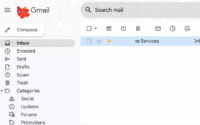Six steps to saving money on your offsite storage of Legal files
Sending files offsite for storage seems an easy way to get completed case files out of view and out of the way in order to make room for your newer case files. However, over time the Records staff as well as the Responsible Attorneys forget about these older files and it is far easier to leave these files located at offsite storage. Storage is fairly cheap! For example, one law firm I worked with only pays $0.20 per box per month for storage. This is only $2.40 per year and only $24 for 10 years (likely the length of storage before disposition). Besides, in many cases it will cost at least $25 just to retrieve that same box.
But there therein lies the problem, as the number of boxes stored offsite increases, so does the monthly bill. Using the same above example, this firm over a 20 year span accumulated over 25,000 boxes in storage. That is about $5,000 per month just to keep the old boxes! It adds up over time; so what is a Records Manager to do?
First, you have to have a clear retention policy. This policy must be authorized and fully supported by management, less there will be attorneys that will want to extend the storage of old materials past their retention date because they could not be bothered at the time to review. Besides, storage is cheap in relation to their billable rate.
Second, send only full boxes offsite. I have seen half empty boxes go offsite because an attorney wanted to “keep the files together” and not with any other matter. However, as long as you have a good tracking system at the file folder level, you can easily locate each file no matter which box it is stored in. Besides, do you think that your offsite storage vendor is keeping your boxes “together” on the same shelf? Likely not, so just make sure you are tracking your files folders and let the storage company worry about the actual storage of the box.
Third, when boxing up files, keep like retention years in the box. This will require a bit of extra space in your records processing room to temporarily shelf files until you have enough to fill a full box. The idea is that most of the time your files will not change their retention year during the life cycle of the file. This way you can hopefully destroy a full box at the same time when the retention period has reached end of life.
Fourth, if for some reason an older box has to be retrieved for an attorney; take a look at the remaining files in the box and adjust accordingly to keep like retention years together in the event that one of the files has had their retention period extended (matter reopen, pending litigation hold, etc).
Fifth, if you happen to have a good tracking system at the file folder level, then do not be concerned with returning that same retrieve file back into the box it came out of. Fill the gap in the box with another file you have waiting on the shelf to box for that retention year and send the full box back to offsite storage. It is too much of a hassle to try and keep a box onsite waiting for an attorney to review a file for their needs when it can take days, weeks or months before they return the file for storage. It is better to keep your records room clear than to hold on to miscellaneous boxes.
Sixth, consider implementing a scanning solution for matters that are newly closed. This way there will be less physical files being sent to offsite storage where they can be forgotten. This should be a going forward only plan, as trying to recall and scan older materials only costs more money than needed when eventually each of those boxes will meet a retention period and get destroyed anyways. The goal is to reduce the number of new boxes being sent offsite. If an older box happens to need to be recalled for attorney review, consider at that time to go ahead and scan any of the files in that box and destroy the physical file. Scanning is not a cheap solution, but in the long run it is easier to apply retention to electronic file stores that are housed on premises, than it would be to recall and pay for delivery of boxes of paper files to be reviewed for destruction.
Seventh (I know, I said six in the title), STOP sending DUPLICATE copies to offsite storage. If the matter is closed, there is no reason to send multiple copies of the same thing to storage. It will be cheaper to reprint materials than it will be to recall, deliver and review files to use the duplicates. Look for printed copies that are likely already in your electronic document management system, and do not send those copies (unless the attorney made notes on those print outs). Return any documents that came from the client back to the client at the time of closing the matter. There is no reason that the law firm should be responsible for storing client materials on their behalf, the firm should only store the documents created by the firm.
In Conclusion, with a little bit of planning in advance and diligent use of a tracking system, you can help reduce the number of physical files being sent to offsite storage and have a better opportunity to keep like retention years together for potential bulk destruction at your offsite vendor rather than recalling and having boxes delivered to your location for retention review.
Let me know if you have other ideas in the comments below that may assist in saving the firm money on storage.

